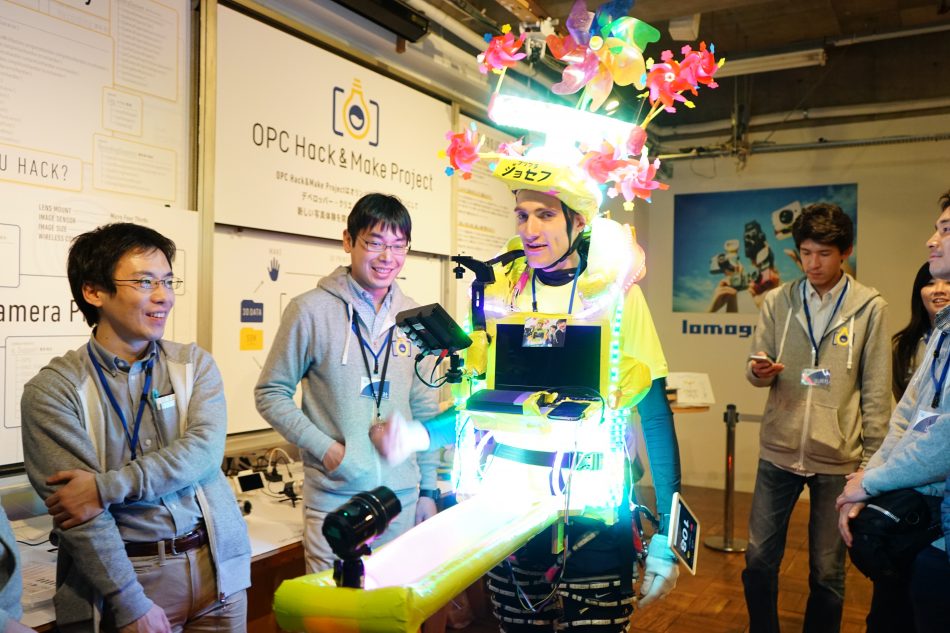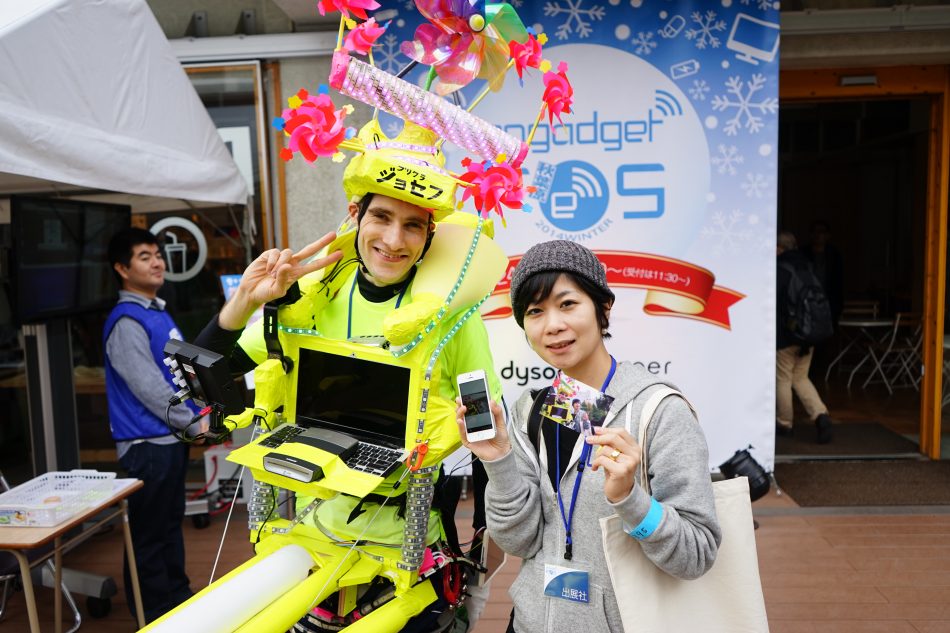
In 2014 I was invited to be a part of a six month project focused on an groundbreaking new camera that Olympus was working on. Olympus describe the camera that it became, the Olympus Air, as:
“… a new concept, OPEN PLATFORM CAMERA (OPC) that pairs the sophistication of digital interchangeable lens cameras with the intelligence of a smartphone for SLR Quality photographs. Olympus AIR offers all of the benefits of an interchangeable lens camera – like optical zoom, high image quality, big bright apertures, strong low light performance and shallow depth of field – in a sleek, simple form factor.”
Uniquely, this screenless smartphone-pairable four-thirds camera has an open API, meaning that developers can create their own apps to control the camera’s core functions, something no other mainstream camera manufacturer had done at that point.
So, what would I do if I could control all aspects of a camera? I thought about the challenges I faced in my performance art. One thing that came up time and time again was the difficulty of taking decent selfies with strangers I met on the street (at their request!)! We would either need someone else to hold the camera, or one of us would awkwardly hold the camera out in front of us at arms length.
Enter the Mobile Purikura!

‘Purikura’ is the name given to those photo booths you find in amusement arcades around Japan, where you can take cute photos of yourself and friends and have them printed out on the spot and sent to your smartphone.
But the downside with them is that you have to go to where they are – you can’t just take the shot wherever you happen to be.
Mobile Purikura solved all of these problems, and made the whole communal selfie experience a lot more fun.
I was teamed up with a fabulous developer, who built a custom iPhone app that, when shaken for a few seconds though the action of running on the spot together, triggered a 3 second countdown on the camera, which would then take a photo. That photo was sent via wifi to the iPhone app, from where it was uploaded to a cloud server. The person whom I was with then needed to enter a short web address, shake their phone, at which point the photo that had just been taken magically appeared!
Simultaneously, the photo was sent to to an Android phone, which was paired with a mobile bluetooth printer that was fixed to my wearable frame, allowing me to print it on real paper then and there! (funnily enough it was always this analogue part that delighted people the most!)
My Mobile PuriKura also featured color-sensing LEDs, wind turbines and a somewhat dodgy-looking boom poll onto which the camera was mounted.
The machine was a big hit, and we had a lot of fun at a number of events providing our mobile purikura service.
My thanks to Loftwork, Olympus, and Asari-san & his team for making all of this possible.
See the Official Project Report 1 (Ja) and official Project Report 2 (Ja).












